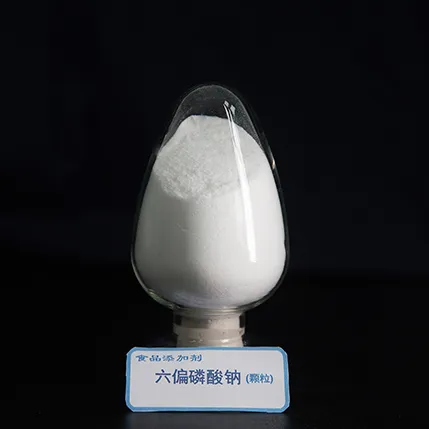Sodium Hexametaphosphate: Characteristics, Uses, and Considerations
Physical Characteristics and Appearance
Sodium hexametaphosphate (SHMP) is an inorganic compound with the molecular formula (NaPO3)6. It is a polyphosphate, often referred to as sodium polymetaphosphate, sodium hexametaphosphate, sodium metaphosphate, and Graham’s salt. Composed of six phosphate ions (PO3)n, it combines with sodium ions (Na+). SHMP appears as a colorless, transparent glass solid or white powder, which dissolves readily in water, forming an acidic aqueous solution. It has strong hygroscopic properties, becoming sticky upon moisture absorption. SHMP is used extensively in various fields, including food additives, industrial applications, and water treatment.
Application in the Food Industry
SHMP is widely utilized in the food industry as a chelating and dispersing agent, enhancing the texture and taste of food. It binds to metal ions, preventing oxidation and deterioration, thus extending the shelf life of food products. In dairy processing, SHMP improves stability and texture, ensuring consistent quality. Its multifunctional properties make it a valuable additive in numerous food processing applications.
Application in the Industrial Field
In the industrial sector, SHMP serves as an excellent dispersant and chelating agent. It is used in the production of ceramics, textiles, leather, and other materials. In paint and coatings manufacturing, SHMP acts as a dispersant, ensuring even distribution of pigments and enhancing coating quality. Its chelating properties are beneficial in preventing scale formation in water treatment processes, maintaining the efficient operation of pipelines and equipment.
Water Treatment Applications
As a polyphosphate, SHMP exhibits effective chelating performance, preventing the precipitation of metal ions like calcium and magnesium in water. This property is crucial in industrial and domestic water treatment processes, where it helps prevent scale formation and ensures the smooth operation of water systems. SHMP’s ability to maintain water quality makes it an essential component in water treatment solutions.
Environmental and Health Considerations
While SHMP is widely used across various industries, there are concerns regarding its environmental and health impacts. Long-term intake of SHMP may pose health risks, necessitating cautious use in food and drinking water. In industrial production and water treatment, adherence to prescribed dosages and methods is essential to minimize potential environmental impacts. Responsible usage ensures safety and sustainability.
Conclusion
Sodium hexametaphosphate is a versatile compound with applications spanning food, industry, and water treatment. Its multifunctional properties make it invaluable in enhancing product quality and operational efficiency. However, responsible and regulated use is crucial to ensure safety and environmental protection.
FAQ
What is Sodium Hexametaphosphate (SHMP)?
- SHMP is an inorganic compound and polyphosphate used in various applications such as food additives, industrial processes, and water treatment.
How does SHMP improve food quality?
- SHMP acts as a chelating and dispersing agent, enhancing the texture, taste, and shelf life of food products.
What are the industrial applications of SHMP?
- SHMP is used as a dispersant and chelating agent in ceramics, textiles, leather, paints, and coatings, improving product quality and preventing scale formation.
How does SHMP benefit water treatment processes?
- SHMP prevents the precipitation of metal ions, maintaining water quality and preventing scale formation in water systems.
Are there any health concerns associated with SHMP?
- Long-term intake of SHMP may pose health risks, so its use in food and water needs careful regulation to ensure safety.

